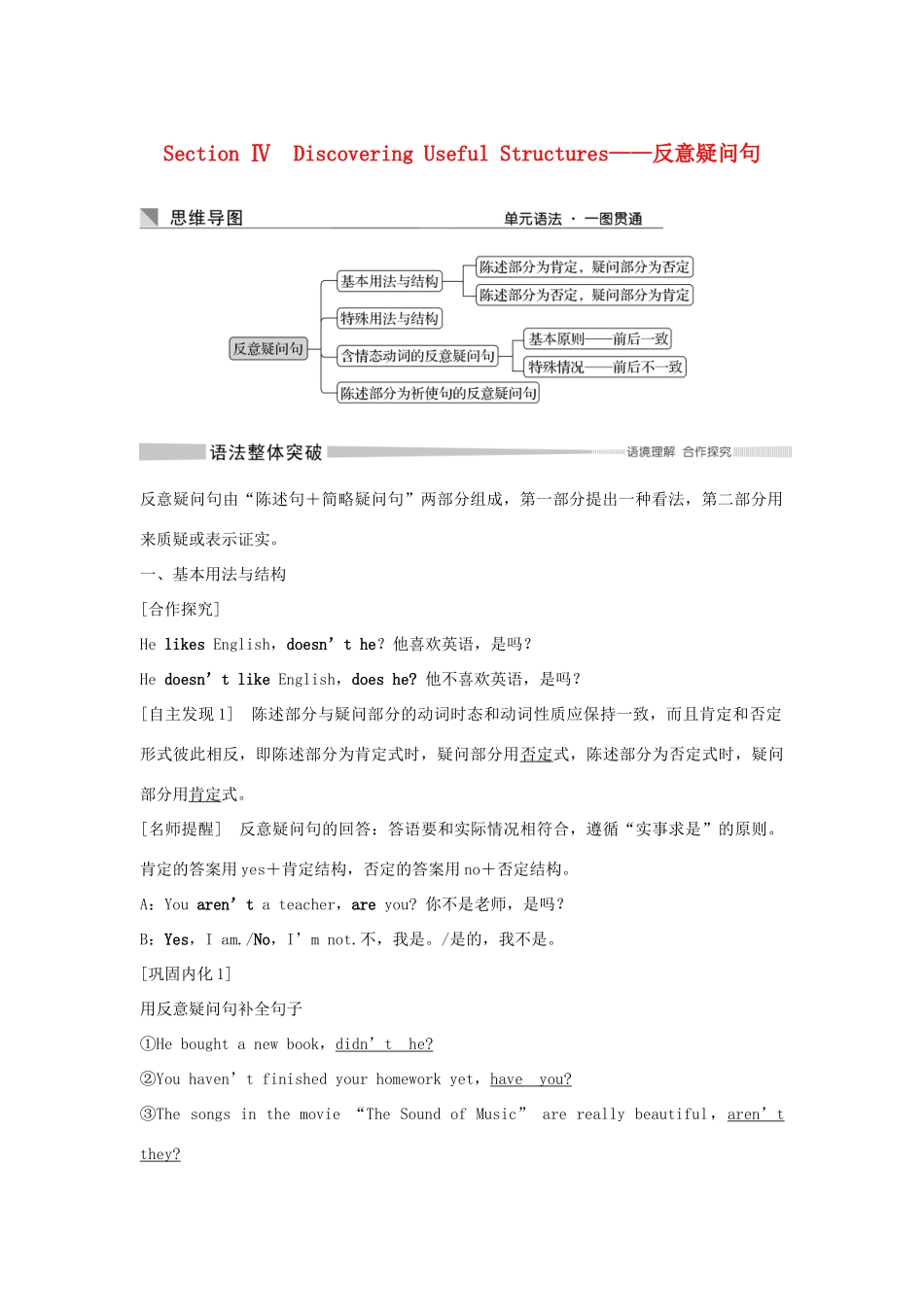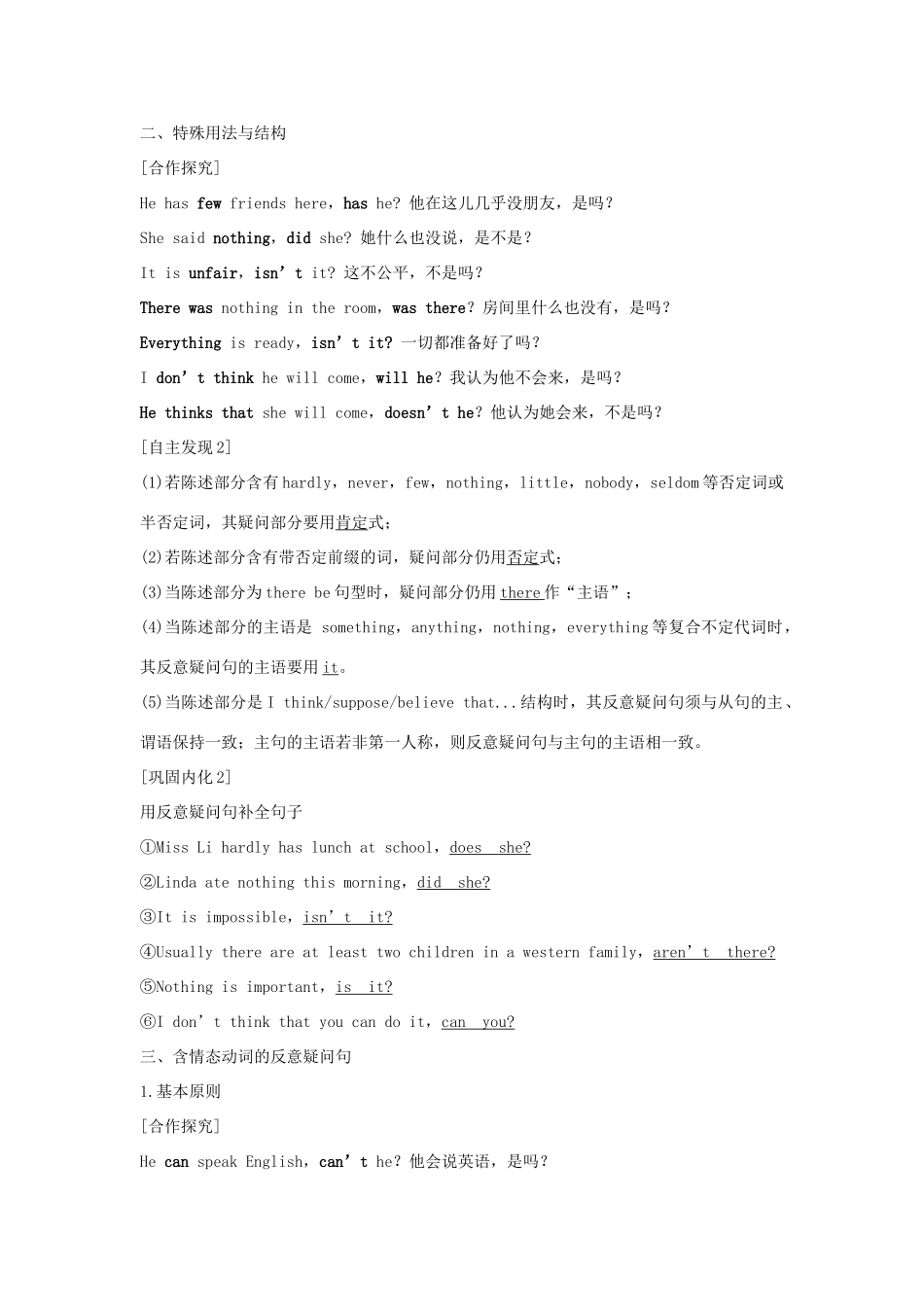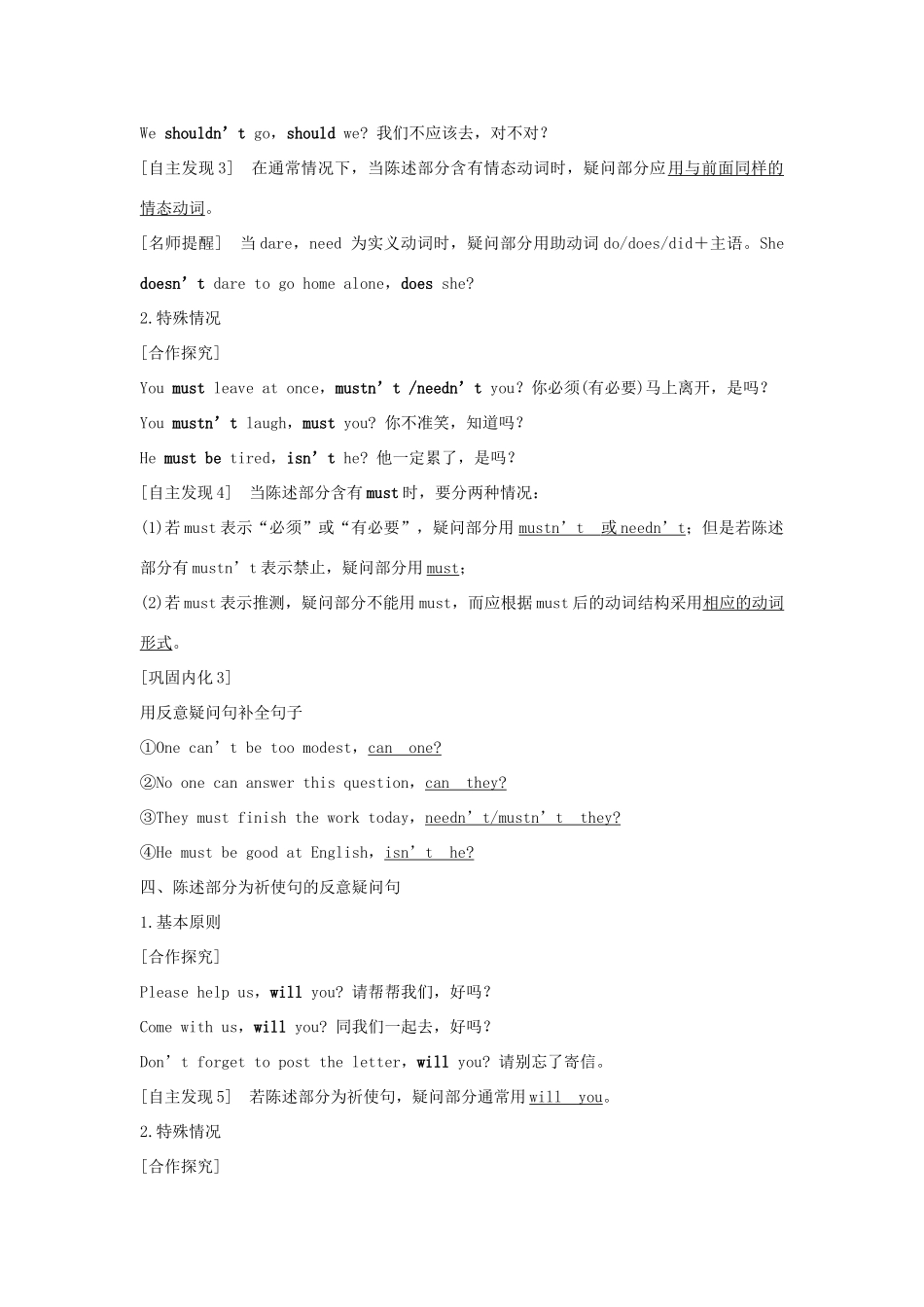Section Ⅳ Discovering Useful Structures——反意疑问句反意疑问句由“陈述句+简略疑问句”两部分组成,第一部分提出一种看法,第二部分用来质疑或表示证实。一、基本用法与结构[合作探究] He likes English,doesn’t he?他喜欢英语,是吗?He doesn’t like English,does he? 他不喜欢英语,是吗?[自主发现 1] 陈述部分与疑问部分的动词时态和动词性质应保持一致,而且肯定和否定形式彼此相反,即陈述部分为肯定式时,疑问部分用否定式,陈述部分为否定式时,疑问部分用肯定式。[名师提醒] 反意疑问句的回答:答语要和实际情况相符合,遵循“实事求是”的原则。肯定的答案用 yes+肯定结构,否定的答案用 no+否定结构。A:You aren’t a teacher,are you? 你不是老师,是吗?B:Yes,I am./No,I’m not.不,我是。/是的,我不是。[巩固内化 1]用反意疑问句补全句子①He bought a new book,didn’t he?②You haven’t finished your homework yet,have you?③The songs in the movie “The Sound of Music” are really beautiful,aren’t they?二、特殊用法与结构[合作探究] He has few friends here,has he? 他在这儿几乎没朋友,是吗?She said nothing,did she? 她什么也没说,是不是?It is unfair,isn’t it? 这不公平,不是吗?There was nothing in the room,was there?房间里什么也没有,是吗?Everything is ready,isn’t it? 一切都准备好了吗?I don’t think he will come,will he?我认为他不会来,是吗?He thinks that she will come,doesn’t he?他认为她会来,不是吗?[自主发现 2](1)若陈述部分含有 hardly,never,few,nothing,little,nobody,seldom 等否定词或半否定词,其疑问部分要用肯定式;(2)若陈述部分含有带否定前缀的词,疑问部分仍用否定式;(3)当陈述部分为 there be 句型时,疑问部分仍用 there 作“主语”;(4)当陈述部分的主语是 something,anything,nothing,everything 等复合不定代词时,其反意疑问句的主语要用 it。(5)当陈述部分是 I think/suppose/believe that...结构时,其反意疑问句须与从句的主、谓语保持一致;主句的主语若非第一人称,则反意疑问句与主句的主语相一致。[巩固内化 2]用反意疑问句补全句子①Miss Li hardly has lunch at school,does sh...


